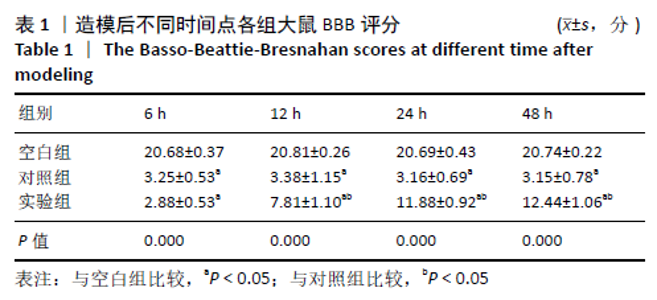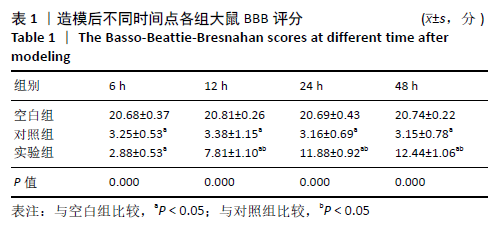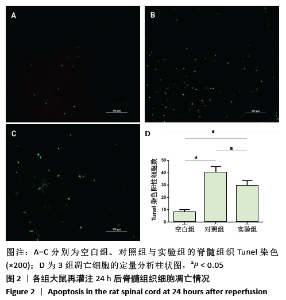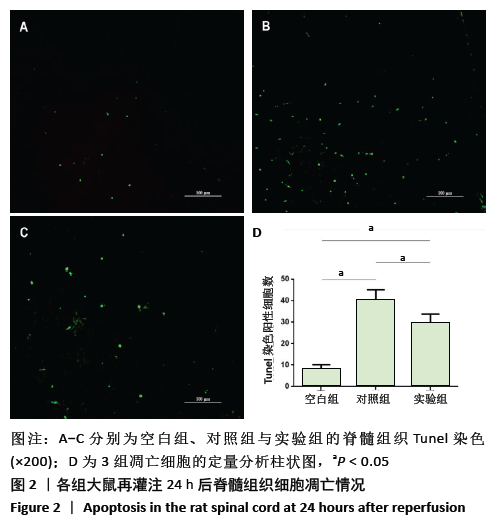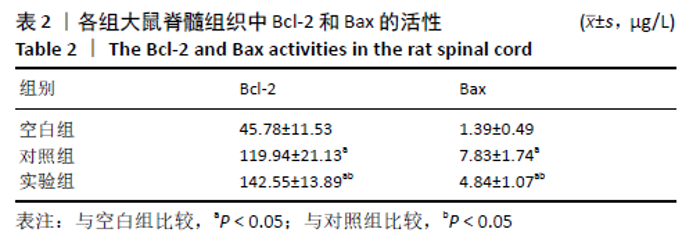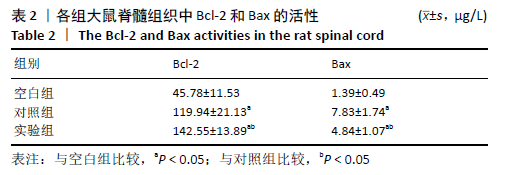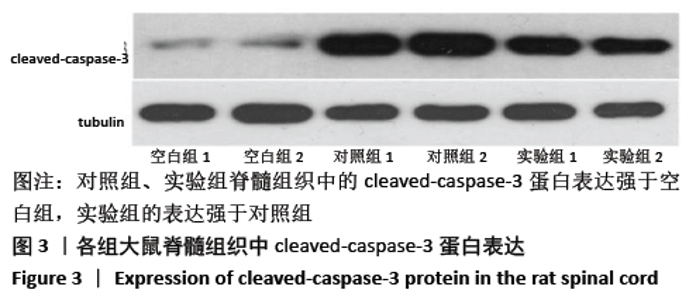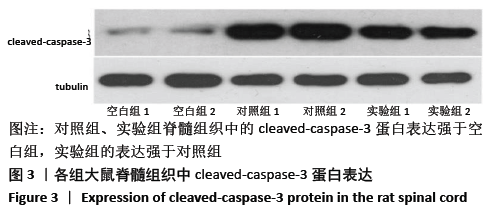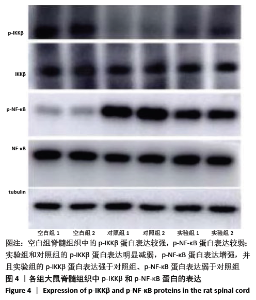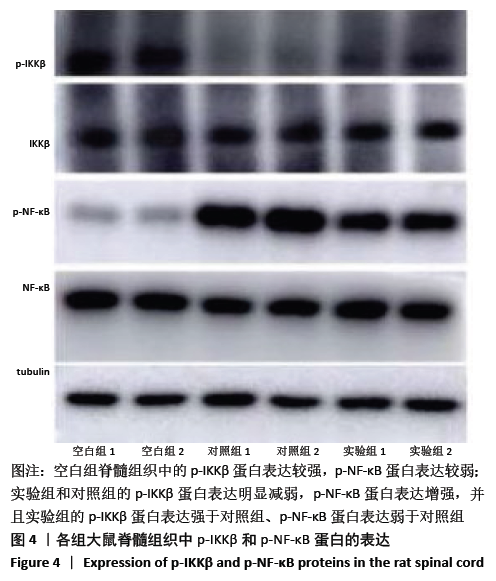[1] LU T, WU XJ, WEI N, et al. Lipoxin A4 protects against spinal cord injury via regulating Akt/nuclear factor(erythroid-derived 2)- like 2/heme oxygenase-1 signaling. Biomed Pharmacother. 2018;97:905-910.
[2] RYU JH, PARK JW, HWANG JY, et al. The attenuation of neurological injury from the use of simvastatin after spinal cord ischemia-reperfusion injury in rats. BMC Anesthesiol. 2018;18:31.
[3] XIE L, YU SF, YANG K, et al. Hydrogen sulfide inhibits autophagic neuronal celldeath by reducing oxidative stress in spinal cord ischemia reperfusion injury. Oxid Med Cell Longev. 2017;2017:8640284.
[4] LI XQ, LV HW, WANG ZL, et al. MiR-27a ameliorates inflammatory damage to the blood-spinal cord barrier after spinal cord ischemia:reperfusion inj-ury in rats by downregulating TICAM-2 of the TLR4 signaling pathway. J Neuroinflammation. 2015;12:25.
[5] HWANG JY, MIN SW, JEON YT, et al. Effect of coenzyme Q10 on spinal cord ischemia-reperfusion injury. J Neurosurg Spine. 2015;22(4):432-438.
[6] LU T, WU XJ, WEI N, et al. Lipoxin A4 protects against spinal cord injury via regulating Akt/nuclear factor(erythroid-derived 2)-like 2/heme oxygenase-1 signaling. Biomed Pharmacother. 2018;97:905-910.
[7] SATER AP, RAEL LT, TANNER AH, et al. Cell death after traumatic brain injury: detrimental cole of anoikis in healing. Clin Chim Acta. 2018;482:149-154.
[8] 董龙家,丁家秀,史学形,等.脊髓损伤后内源性神经干细胞增殖与Bcl-2的相关性研究[J].贵州医药,2018,42(3):259-262.
[9] PARK MS, JOO SH, KIM BS, et al. Remote preconditioning on rat hepatic ischemia-reperfusion injury downregulated Bax and cleaved caspase-3 expression. Transplant Proc. 2016;48(4):1247-1250.
[10] SONG GH, HUANG FB, GAO JP, et al. Effects of fluoride on DNA damage and caspase-mediated apoptosis in the liver of rats. Biol Trace Elem Res. 2015;166(2):173-182.
[11] Lossi L, Castagna C, Merighi A. Caspase-3 mediated cell death in the normal development of the mammalian cerebellum. Int J Mol Sci. 2018;19(12):pii:E3999.
[12] MATSUDA S, UMEDA M, UCHIDA H, et al. Alterations of oxidative stress markers and apoptosis markers in the striatum after transient focal cerebral ischemia in rats. J Neural Transm(Vienna). 2009;116(4):395-404.
[13] ABE J, MORRELL C. Pyroptosis as a regulated form of necrosis:PI+/Annexin V-/High caspase 1/low caspase 9 activity in cells=pyroptosis? Circ Res. 2016; 118(10):1457-1460.
[14] SIVANDZADE F, PRASAD S, BHALERAO A, et al. NRF2 and NF-қB interplay in cerebrovascular and neurodegenerative disorders: Molecular mechanisms and possible therapeutic approaches. Redox Biol. 2018;21:101059.
[15] JHA P, DAS H. KLF2 in regulation of NF-κB-mediated immune cell function and inflammation. Int J Mol Sci. 2017;18(11):2383.
[16] DURAND JK, BALDWIN AS. Targeting IKK and NF-κB for therapy. Adv Protein Chem Struct Biol. 2017;107:77-115.
[17] LIU L, QU Y, LIU Y, et al. Atsttrin reduces lipopolysaccharide-induced neuroinflammation by inhibiting the nuclear factor kappa B signaling pathway. Neural Regen Res. 2019;14(11):1994-2002.
[18] MANTOVANI A. Molecular pathways linking inflammation and cancer. Curr Mol Med. 2010;10(4):369-373.
[19] YANG X, CHEN S, SHEN S, et al. Apolipoprotein E deficiency exacerbates spinal cord injury in mice: inflammatory response and oxidative stress mediated by NF-κB signaling pathwa. Front Cell Neurosci. 2018;12:142.
[20] GU SM, YUN J, SON DJ, et al. Piperlongumine attenuates experimental autoimmune encephalomyelitis through inhibition of NF-kappaB activity. Free Radic Biol Med. 2017;103:133-145.
[21] SUN Z, ZHAO T, LV S, et al. Dexmedetomidine attenuates spinal cord ischemia-reperfusion injury through both anti-inflammation and anti-apoptosis mechanisms in rabbits. J Transl Med. 2018;16(1):209.
[22] ZHANG J, DENG X. Bupivacaine effectively relieves inflammation-induced pain by suppressing activation of the NF-κB signalling pathway and inhibiting the activation of spinal microglia and astrocytes. Exp Ther Med. 2017;13(3):1074-1080.
[23] ZANDI E, ROTHWARF DM, DELHASE M, et al. The IkappaB kinase complex(IKK) contains two kinase subunits, IKKalpha and IKKbeta, necessary for IkappaB phosphorylation and NF-kappaB activation. Cell. 1997;91(2): 243-252.
[24] PERKINS ND. Post-translational modifications regulating the activity and function of the nuclear factor kappa B pathway. Oncogene. 2006;25(61): 6717-6730.
[25] KIM EK, CHOI EJ. SMN1 functions as a novel inhibitor for TRAF6-mediated NF-κB signaling. Biochim Biophys Acta. 2017;1864(5):760-770.
|
